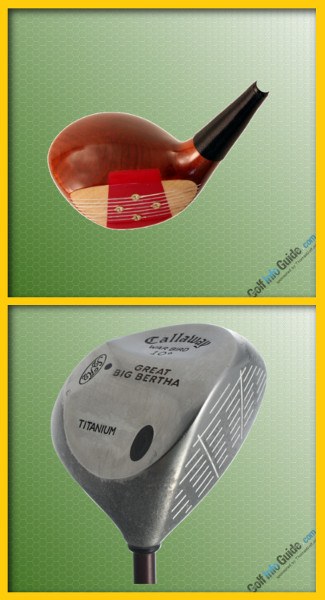
Most golfers born after 1980 never experienced the joy of a well-struck tee shot with a wooden-headed driver. If you caught it just right, the sound and the feel were extraordinarily different than the noise and feedback you get from today’s latest drivers.
For years, persimmon wood drivers were the standard for touring professionals and serious weekend golfers. MacGregor was the preferred manufacturer for the best pros throughout the 1950’s and 1960’s. It became a common practice to treat the clubhead with linseed oil to harden the surface and protect it from moisture.
In the early 70’s, the first club designers began working with metal, initially aluminum, in an effort to revolutionize the long game. It took two decades before they became ubiquitous on the PGA and European tours. Aluminum was eventually bypassed for titanium, steel or composite material.
One of the first companies to sell metal drivers was a company called Pinseeker. They marketed “The Bombshell” which debuted in 1976.
One of the early pioneers was Gerry Adams, a man considered the Grandfather of the metal wood, who would find fame as the founder of TaylorMade. TaylorMade produced a standard-sized head metal driver in 1979 with a famous tag on the sole of the club, “Pittsburg Persimmon”, a nod to the steel city and the material utilized for the club. TaylorMade’s first metal driver debuted three years after Pinseeker, which was quickly on its way to obscurity.
While Adams and others deserve credit, the U.S. patent office reportedly received and granted patent applications on the concept of a metal headed club as early as the 1920’s.
At any rate, Adams persisted in his campaign to revolutionize the game. The big name players of that era, Watson and Nicklaus to name two, persisted with persimmon. The concept slowly gained traction and nothing helps sell an idea better than success.
Recorded accounts create some confusion on who the first player was to win using a metal driver. Jim Simons won a PGA tour event with a metal driver at the 1982 Bing Crosby National Pro-Am (now the AT&T). Simons had a TaylorMade driver in the bag that week. Lee Trevino became the first person to win a major championship (1984 PGA Championship) with a metal wood. Ron Streck, one of Adam’s earliest disciples, won the rain-shortened Michelob Open in 1985 with a TaylorMade driver.
By the early 90’s, the next evolution in the driver was the introduction of the oversized head. Suddenly, players looked down and saw a clubhead dramatically larger than their old persimmon model. The advantage of the larger head was obvious, a bigger sweet spot which made for longer and straighter tee shots, even on off-center hits. Callaway became the major player in the oversized metal driver market with their introduction of the Big Bertha driver (soon to be followed by the Great Big Bertha and the Biggest Big Bertha). Other companies piled into the booming market and as clubheads swelled in size every season, the USGA had to eventually intervene and limit the size in an effort to preserve the spirit of the game.
By then, the race was on and by the 1990’s, the metal woods were here to stay. A few diehard persimmon purists hung on into the late 1990’s, most notably Justin Leonard and Davis Love III led a group of about a dozen players who still used traditional drivers during the 1997 season. By 2001, it was over. Bob Estes teed up a persimmon driver at the Accenture World Match Play that year and that was it.
The other wave of innovation that began around this time was the switch from steel to graphite shafts. Graphite was lighter, which of course equates to more swing speed and ultimately more distance. Every season the major golf club manufacturers add new wrinkles and tweaks to last year’s model.





